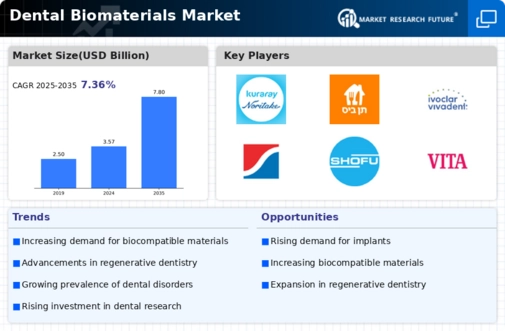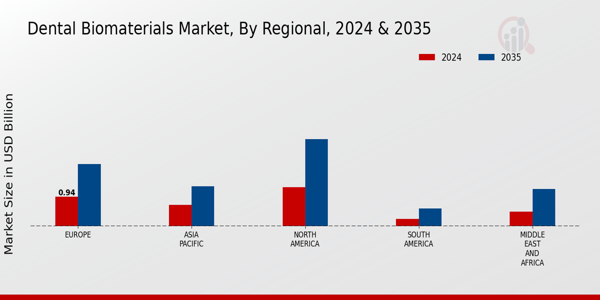Market Analysis
In-depth Analysis of Dental Biomaterials Market Industry Landscape
Since it involves the development of aesthetic, therapeutic, and implant dentistry products, the Dental Biomaterials Market has become quite essential in recent years. Due to dental technology, an aging population, and cosmetic dentistry, this area has evolved rapidly. Dental plastics are rising because more individuals require cosmetic and corrective dentistry. Dental repair patients desire natural-looking, long-lasting, and body-friendly materials. New biomaterials have transformed dentistry. Bioactive ceramics, composite resins, and 3D-printed materials are improving patient comfort, appearance, and durability in dentistry. Dental disorders include cavities, gum disease, and tooth loss have increased the demand for dental plastics. These items aid with many oral health issues, making them essential for repair and therapy. Dental wear, fissures, and loss are rising as the global population expands. The Dental Biomaterials Market is adapting to these demographic shifts by offering new services to older clients. Implant dentistry has transformed the discipline. Because dental polymers like safe dental implant materials are crucial, the industry is rising. These are necessary for implantation. Biomaterial choices have altered with less-invasive dentistry. Dentists select careful materials for optimal appearance and performance. The tooth's original composition is preserved. Biomaterials are being employed in regenerative dentistry to create and repair tissue. Regenerative substances heal gums and tooth pulp. The Dental Biomaterials Market is growing as firms cooperate wisely. Bigger dental enterprises are purchasing smaller ones to gain additional items and compete in the tough dental plastics industry. Environment is becoming increasingly essential in dental polymers. Companies are creating more eco-friendly and long-lasting dental and healthcare items as part of the trend toward sustainable products. Following norms and quality standards is crucial in the Dental Biomaterials Market. To ensure oral biomaterials are safe, effective, and biocompatible, producers must follow criteria. This might alter the market. Financial resources and patient treatment costs impact dental biomaterial utilization. Modern polymers are being developed to provide affordable, high-quality dental treatment. Some current oral biomaterials are expensive, need continuing research, and have regulatory issues. You must overcome these issues and use new technologies to influence the market.












Leave a Comment